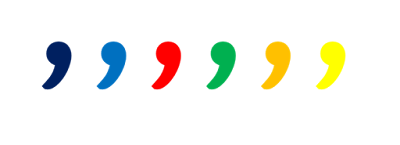Win Six Autographed Books Plus More on Commas
Last week, I covered 3 comma usage rules. I'm going to follow up this week with three more comma rules, but before I do that, I want to share a cool contest with you.
and TWO people will win!
Here are the details:
- Dates: May 24-May 31
- What: A chance to win SIX series starter books signed by these blockbuster authors
- Plus: Lots of great author info in their newsletters
- The Books:
- Telepathic women who helped military bombers strike their targets.
- Legal hitmen who only need a contract to kill.
- The fall of the corporation-run government and the shattered lives left to survive this fallen world.
- People from the wrong side of humanity fighting the system and its prejudices by using a loophole to follow a dream of space travel.
- Current day military called to save the world from invading aliens.
- And of course, telepathic giraffes and women warriors trying to keep the four kingdoms out of the hands of a traitor (a.k.a THE WATCHERS OF MONIAH).
- Winners: Two people will win all 6 signed copies. Everyone will get to know these authors, their books, and more about what they're doing.
- Authors: Chris Kennedy, Christopher Woods, Kacey Ezell, Kevin Steverson, William Alan Webb, and me, Barbara V. Evers
Now back to commas...
We covered three comma rules last week. Let's look at three more.
1. When beginning a sentence with an introductory phrase or an introductory (dependent) clause, include a comma.Example (Introductory Phrase)
Example (Introductory Clause)
In this sentence, the introduction has a subject (commanders) and verb (turned), and it introduces the main clause of the sentence (their faces registered confusion and curiosity). It's considered a dependent clause because it can't stand as a sentence by itself. We place a comma at the end of the introductory clause, just before the main sentence clause.
Example
Example
3. When writing a list of three or more items, separate the items using commas. For the last item in the list, use a comma and the word "and" or "or."
Example
I like cooking, my family, and dogs.
Imagine for a moment we didn't have the commas in this list:
I like cooking my family and dogs.
THAT, my friends is a totally different message. One means you like your family and dogs; the other means you cook them. Yikes!
The big argument centers around the oxford comma, the comma before the "and," also known as the serial comma. Some style guides (AP) don't require the oxford comma. Others do (Chicago Manual of Style). In some cases, you won't run into any misunderstandings if you don't use the last comma.
Example
We went to the store for apples, oranges and bananas.
But let's look at some issues where the oxford comma becomes essential:
Example
Why don't you sit with Jane, the jokester and the cat?
Without the oxford comma, we can interpret this to mean Jane is the jokester and cat! Jane might not appreciate that. Here's another example.
I enjoy talking to my parents, God and Mrs. Smith.
This sentence could be misinterpreted as stating my parents are God and Mrs. Smith. We can recognize the author's meaning with obvious examples like God, but what about this one?
I enjoy talking to my parents, Joan and Simon.
Are my parents' names Joan and Simon or are Joan and Simon two other people I enjoy talking to? IF they are not my parents, I can eliminate the confusion by using the oxford comma.
Again, there's a raging debate over this. (Here's an argument that led to a costly lawsuit.) I prefer to use the oxford comma. Publishers and academia use the Chicago style which requires the oxford comma. If you're a news reporter, the AP style doesn't require the comma.
Which do you prefer?
Pulling it together
If you can master these three rules and the three from last week, you will be ahead of the pack on comma usage.
Which means you have time to enter the contest and read!
Questions? Leave them in the comments.






Comments